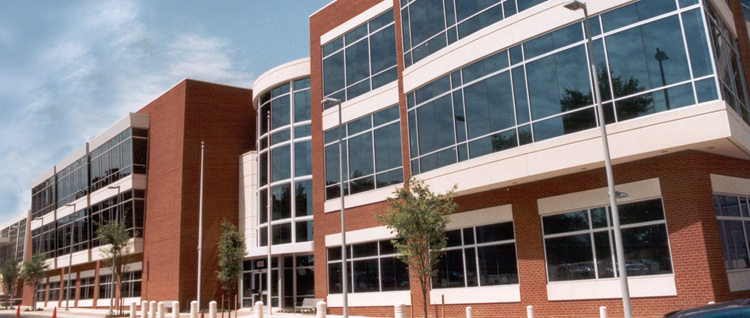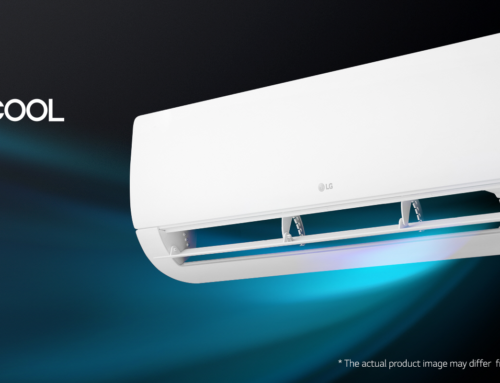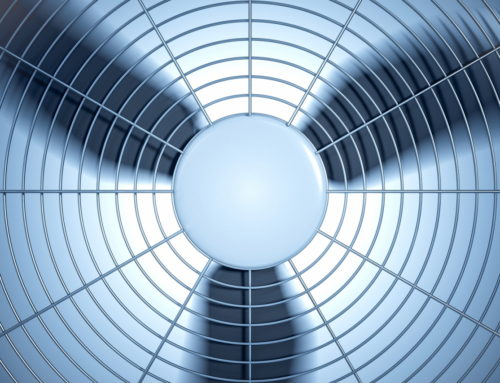
In the old detective movies, it was common for the criminals to suddenly appear out of the fog and then disapper back into it after compeleting their dastardly deeds. For the Commonwealth of Virginia’s Division of Consolidated Laboratory Services (DCLS), however, fog played the hero’s role, cutting maintenance and energy costs, while providing a more comfortable working environment for the employees.
As its name implies, the DCLS provides testing services for around 50 states and federal agencies including the FBI, the state police, state health department and the Environmental Protection Agency. In 2004, the DCLS moved into a 140,000 square foot building. The HVAC there included dual 400-ton Buffalo Air – air handling units (AHUs) to provide more than 200,000 CFM of mostly outside air, allowing eight to ten complete air changes per hour.
Given the large amount of outside air, gas-fired steam humidifiers were installed to offset the effects of the dry winter air. But within a few years of installation, they were already proving problematic. Scale buildup on the steam generators greatly reduced their capacity and they began failing.
“They just kept breaking down,” said DCLS’ building manager. “The burners would quit; the boxes would get cracks in them; they just weren’t working out. We needed to replace the units and hated the idea of just replacing the same type of system.”
The Installation
Since these types of problems are common with steam humidification, DCLS went looking for a better technology that was simpler to maintain, so they spoke with Al Torquato of Prime Air Products about switching to a fog humidification system. Torquato ran the numbers and found that DCLS could cut its maintenance and energy costs by $250,000 a year. As you can imagine, DCLS decided to make the switch.
“We liked the simple design of the system and we have been very satisfied with the way it has performed.” Said The Building Manager
Torquato proposed that DCLS use a MeeFog humidification system consisting of three 7.5 hp CAT Pumps model FM-1050-B1051 high pressure ceramic plunger pumps, each delivering 10.5 gpm of water at 1000 psi. The pumps are controlled via individual manual-off-auto (MOA) selector switches mounted on the PLC panel. The lead pump can be selected manually, or if all three pumps are in auto, then the pump with the lowest run hours will start first. The total load of the air handlers can be served by just two of the pumps, with the third pump acting as a backup. Initially just one pump comes on line, but if the flow rate exceeds a set point, the second one will come on line and the speed of the two pumps is equalized.
The Building Automation System provides the fogging system with a 0-10 vdc signal which the staging processor uses to determine which staging solenoids to energize for each air handler to increase or decrease the amount of fogging. As the humidity demand changes, the processor re-calculates the valve configurations needed to maintain humidity set points.
Installation of both the fogging system and a reverse osmosis (RO) water softener system took less than a month.
“It’s not a big, complicated system,” said DCLS’ Building Manager. ” They were even able to install the spray racks in the air handlers while the handlers were running, so there was no interruption in the operations.”
Slashing Energy and Maintenance Costs
Prior to installation, Torquato had conducted an analysis comparing the purchase, installation, maintenance and operation costs of the gas-fired and fog systems. To purchase and install the MeeFog and RO system was about 9% more than simply replacing the gas-fired steam generators and there was also a $139,725 cost for demolition, retrofit of AHU sections, electrical and piping changes. However, these were more than offset by a $192,426 annual savings and $58,400 less in annual maintenance costs. Based on those figures, the fogging system would pay for itself in 8 months, and the DCLS would save $250,000 a year going forward.
While the DCLS won’t give financial details, they did say,”We are saving a tremendous amount of money because we are not burning gas through the gas-fired humidifiers. Our gas bills came way down when we got rid of them.”
Learn more about Men Fog and what they offer at their page here.
The gas savings are primarily in the dry winter months, but the MeeFog system also saves money in the summer when they manually run the units in hot days to take advantage of the cooling effect of the evaporating water. With the MeeFog system, maintenance has been reduced to changing the oil in the pumps, swapping out the water filters and making sure there is softening salt in the RO system. Other than that, it just does its job without a lot of extra care and attention.





